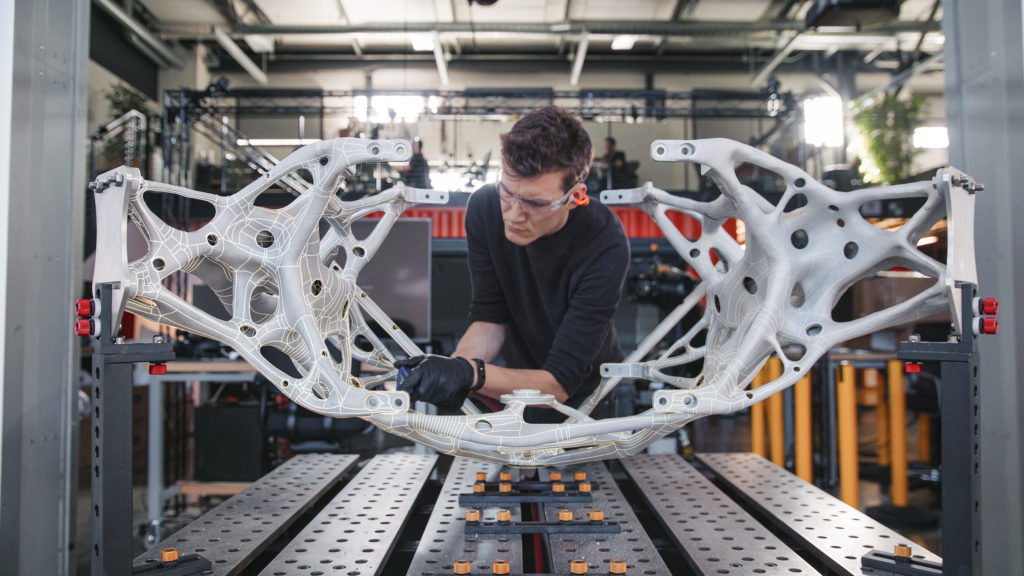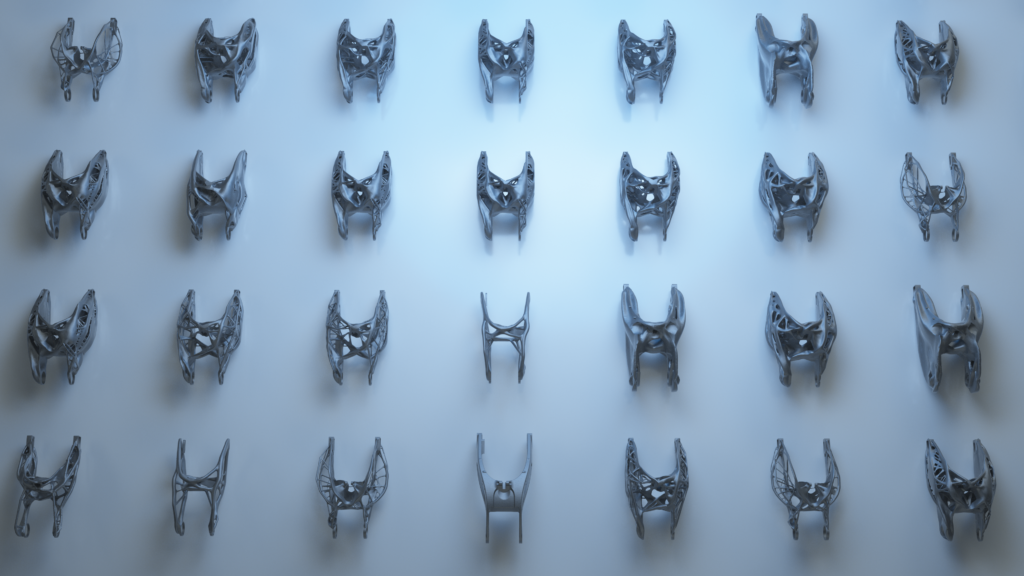& Construction

Integrated BIM tools, including Revit, AutoCAD, and Civil 3D
& Manufacturing

Professional CAD/CAM tools built on Inventor and AutoCAD
3 min read

As the generative design process takes off in many organizations, it has sent other CAD and software tool vendors scrambling. In the midst of their scramble to compete, CAD Vendors have begun rebranding and selling topology optimization as generative design. This is wrong, and do not get fooled!
Here we go, we explain the difference and give you a questionnaire to finally answer the question, “What is the difference between topology optimization and generative design?”.

General topology optimization begins with one complete human-designed CAD model concept (in other words, the process begins with human bias and is limited by this bias) with loads and constraints applied based on the project requirements. Topology optimization returns only one optimized concept for evaluation based on the human-designed model. There is no automated ideation. Lastly, it returns to the user an optimized mesh-model result (optimized only from the human-designed model) that must be rebuilt in a CAD system that is intended for downstream use.
Topology optimization has been around for 20 years. Every vendor, including Fusion 360, has had this capability for many years and has been made widely available to all users.

Generative design in Fusion 360 begins with hold out areas, preserved areas, loads, and constraints based on the project requirements. Artificial Intelligence, not humans, determine the topological concepts that are created for evaluation. Autodesk generative design returns many optimized concepts (automated ideation) for evaluation based on the design and manufacturing criteria. Further, Autodesk generative design leverages Apriori to suggest costing criteria for each outcome to make better decisions. Lastly, Autodesk generative design in Fusion 360 returns to the user a CAD ready geometry model that can be edited in any system.
Generative design in Fusion 360 allows users to explore, optimize, and evaluate data-driven design alternatives based on project goals, constraints, and inputs. For the first time, Engineers and Designers can utilize Artificial Intelligence (AI) technology to explore multiple design alternatives and weigh the trade-offs in order to identify improved design outcomes and make data-informed decisions faster than ever before.
For more information on Generative Design, please review the following links:
Top 7 Generative Design Learning Guides
Future Of Making: Generative Design For Manufacturing
Change is Coming: Are You and Your Company Ready?
Do you aspire to be great at CAD, or to be a Great Engineer?
Fusion 360: The Next Wave of Democratization
Don’t get fooled by one of the many pretenders. Leverage the power of generative design in Fusion 360. More importantly, use this process from Fusion 360 with any other CAD data or CAD system you have installed.
Try Fusion 360 today.
By clicking subscribe, I agree to receive the Fusion newsletter and acknowledge the Autodesk Privacy Statement.
Success!
May we collect and use your data?
Learn more about the Third Party Services we use and our Privacy Statement.May we collect and use your data to tailor your experience?
Explore the benefits of a customized experience by managing your privacy settings for this site or visit our Privacy Statement to learn more about your options.